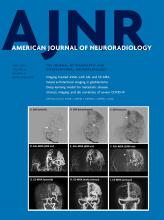Incorporating innovative technologies and techniques often precipitates paradigm shifts in patient care. Despite the rapid evolution of endovascular devices and techniques, the idiom “primum non nocere” or “first, do no harm” must remain at the forefront of the interventionalist’s use of new therapies. While change at times may be driven by innovations that increase the speed or ease of a procedure, new techniques that facilitate improved efficacy, an enhanced safety profile, or the ability to treat an otherwise untreatable pathology should be the primary driving force behind technologic advances. One such therapy, the move to transradial access (TRA) for neurointerventional procedures, has marked a sizeable paradigm shift in the literature and care of neurovascular patients during the past several years.
Following compelling data from the cardiovascular literature,1,2 a boom in the use of transradial access in diagnostic and interventional endovascular neurosurgery procedures has been observed.3⇓⇓-6 In addition to an improved patient safety profile, TRA tends to enhance patient comfort and allows earlier mobilization and shorter observation for outpatient procedures. As neurointerventionalists have gained further experience, TRA has been used with increasing frequency for interventions as well.7,8
The learning curve may be steep at the onset of converting to a radial-first approach, with increased procedural and fluoroscopic times a legitimate concern.9 Nonetheless, while fluoroscopy times may be marginally increased (approximately 4 minutes), a significant reduction in overall complications has been observed with TRA, generating a near 4-fold decrease in the rate of complications.9 Additionally, while the learning curve may be daunting at the onset, high success and low rates of crossover are experienced after as little as 30 TRA cases, with many skills from transfemoral access (TFA) being readily transferrable to TRA.10
In the setting of mechanical thrombectomy for acute ischemic stroke, access site complications are not infrequent with TFA, with major and overall access site complication rates of 1.67% and 4.59%, respectively, leaving room for improvement in the treatment of this patient population.11 While robust head-to-head comparisons of TFA and TRA do not yet exist in the neurointerventional literature, the use of TRA in interventional procedures has been shown to have lower major (0.15%) and overall (2.75%) access site complication rates.7 As TRA experience has grown, so has its use in the setting of acute thrombectomy, where time and efficiency remain paramount. In fact, equivalent procedural times have been observed in this time-sensitive interventional procedure.12,13 A comparison of mean procedural times between TRA (60 minutes) to TFA (66 minutes) in the setting of thrombectomy for large-vessel occlusion found no difference in time metrics between the 2 approaches.12
Despite its advantages, certain anatomic features may not prove favorable for transradial access. Previous studies have shown that the presence of a proximal radial loop, severe subclavian and innominate artery tortuosity, and proximal common carotid tortuosity yield a higher degree of difficulty for TRA with a higher conversion rate to TFA.14 Particularly in time-sensitive procedures, patients having these anatomic configurations may be best served with TFA, because the benefits afforded by TRA must be weighed against the potential time lost. Nonetheless, TRA has demonstrably lower rates of access site complications and resultant patient morbidity; thus, partiality ought to be shown to TRA in the absence of certain anatomic constraints.
While transradial access for middle meningeal artery embolization is being used with greater frequency,15 Shotar et al16 presented their experience using a patient-tailored approach to the access site based on preprocedural CT angiograms and interventionalist’s discretion, with a strong radial recommendation for right carotid catheterization in patients with a type III aortic arch with proximal common carotid artery tortuosity and for left carotid navigation in case of a bovine arch configuration. Using this approach, they found a greater rate of procedural success with less catheterization failures.
Given the safety benefit afforded by transradial access, in addition to the secondary gains of improved patient comfort and early mobilization, a radial-first approach for both diagnostic and interventional procedures has continued to evolve within neurointerventional surgery. A tailored approach using frontline TRA for both diagnostic and interventional procedures, augmented with TFA for certain hostile anatomic configurations, maintains a patient-centered focus, aimed at improving care through enhanced safety. As more familiarity with the technique and new devices develop, rates of crossover and potential time differences will decrease while maintaining the improved safety profile afforded by TRA, thus enhancing the neurointerventional care provided to our patients.
References
- © 2021 by American Journal of Neuroradiology












